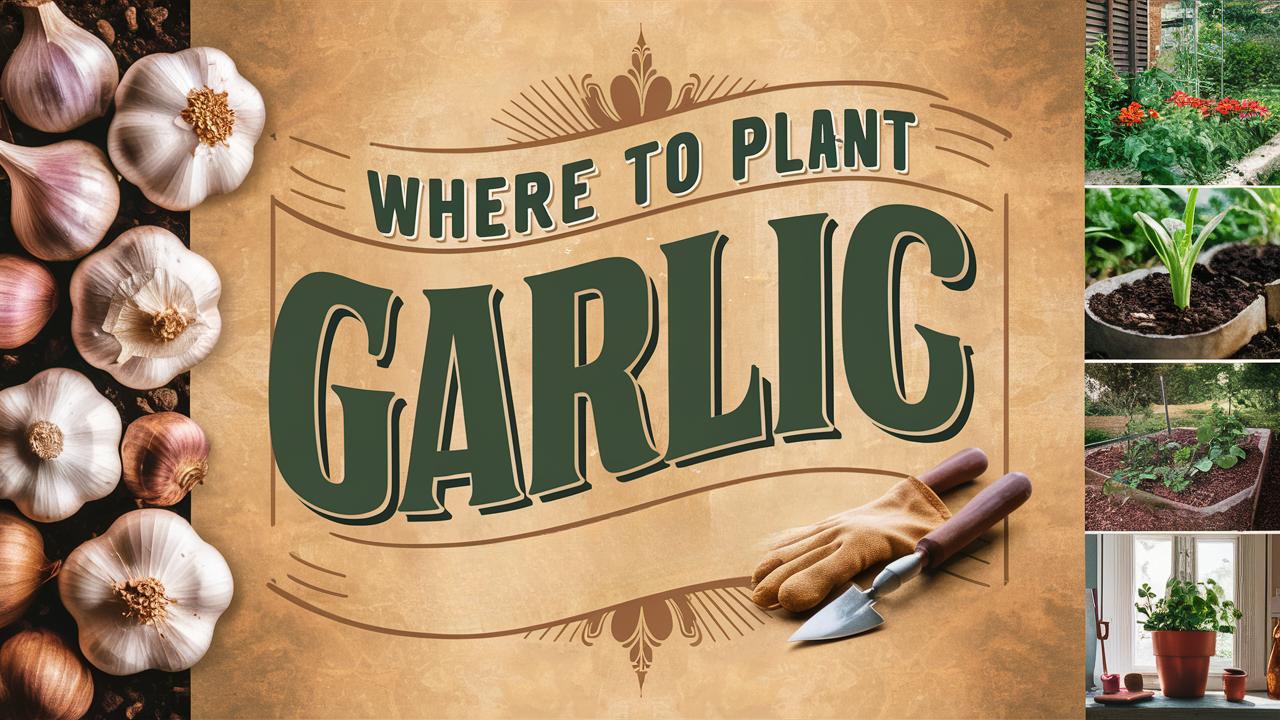This comprehensive guide explores the optimal locations for planting garlic, considering factors such as climate, soil type, and companion planting benefits. So, grab your gardening gloves, and let’s dig into the world of garlic!
Understanding Garlic Varieties and Their Needs
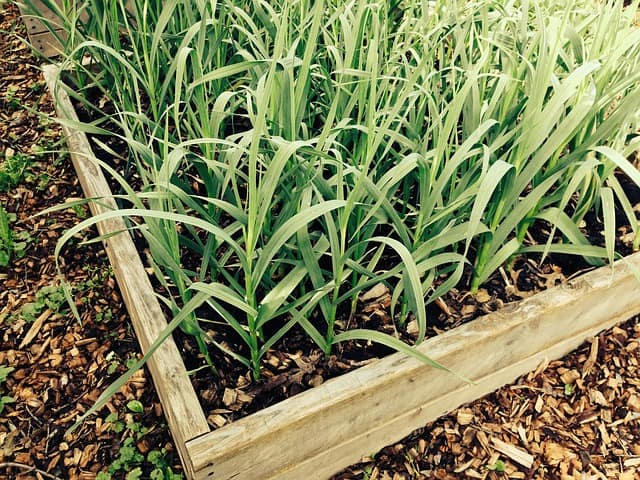
Before we delve into where to plant garlic, it’s essential to understand that there are different varieties of garlic suited for various climates and growing conditions. The two main types of garlic are hardneck and softneck, each with distinct characteristics and requirements.
Hardneck Garlic
Hardneck varieties, such as ‘Rocambole’ or ‘Porcelain,’ thrive in cooler climates. They typically produce fewer cloves per bulb but boast a richer flavor and are known for their impressive flower scapes. Ideal for planting in regions with cold winters, hardneck garlic requires a chilling period to develop properly.
Softneck Garlic
Softneck garlic, including ‘Artichoke’ and ‘Silverskin,’ does better in milder climates and is generally the type seen in grocery stores. This variety tends to store longer than hardneck garlic and is particularly well-suited for warmer climates. Knowing your variety is key in deciding where to plant garlic, as each has preferences concerning temperature and sunlight.
Climate Considerations: The Garlic Growing Zone
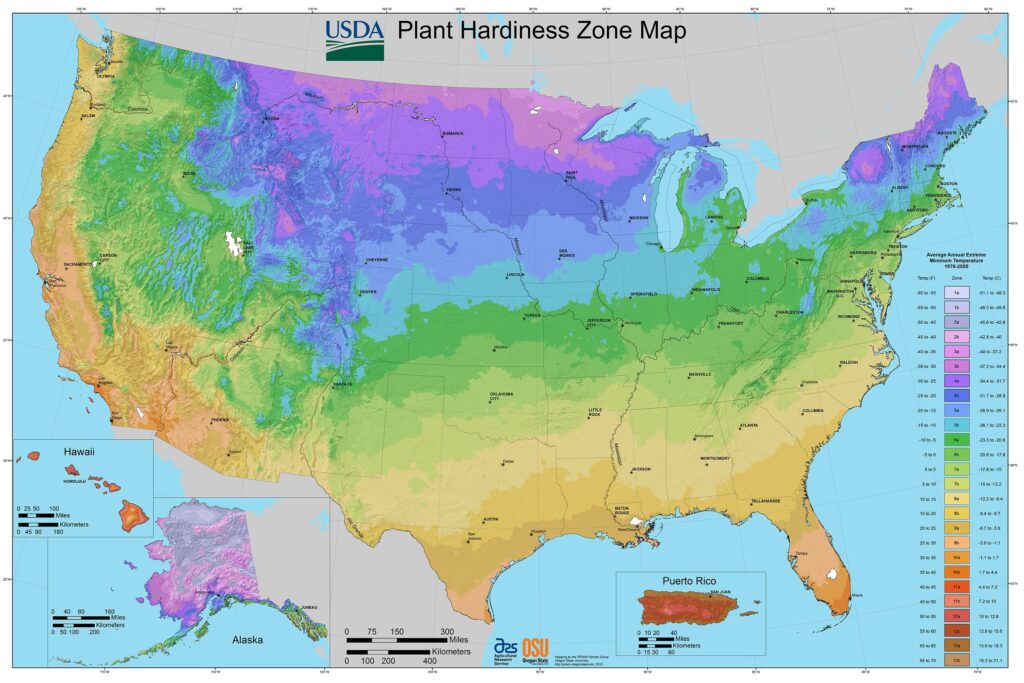
Garlic is a versatile crop but thrives best in USDA hardiness zones 3 to 9. Understanding your climate zone is crucial when determining the best place to plant garlic.
Cool Climate Garlic Planting
If you live in a cooler climate, typically found in zones 3 to 5, you should consider planting garlic in the fall. This allows the bulbs to establish roots before winter sets in. The ideal location would be one that retains warmth from the sun while also providing some protection from harsh winter winds. Choose a spot with well-drained soil that can gather and hold enough moisture from rain.
Mild Climate Garlic Planting
For gardeners in USDA zones 5 to 7, the planting window expands. You can plant garlic in both the fall and spring. Finding a location with direct sunlight will help your garlic flourish. A site that warms early in the spring will give your garlic a head start. Additionally, if you live in a milder area, consider planting your softneck varieties, which thrive there and will produce larger, more potent bulbs.
Warm Climate Garlic Planting
In warmer climates (zones 8 and 9), plant garlic in the fall for larger bulbs. Your primary consideration here is to ensure proper moisture and soil temperature. It might also be beneficial to provide shade during the hottest parts of the day. Careful attention to your variety selection is necessary to ensure that your plants can withstand the warm temperatures.
Soil Requirements for Garlic: Finding the Perfect Ground

Garlic is not particularly picky when it comes to soil, but for optimal growth, certain characteristics are preferred. Garlic thrives in well-drained, loose soils rich in organic matter. Conducting a soil test is a great first step to assess pH levels and nutrient content.
Ideal Soil Composition
pH Levels: Garlic prefers slightly acidic to neutral soil, with a pH between 6.0 and 7.0. If your soil is too acidic, add lime to raise the pH. Conversely, if the soil is too alkaline, sulfur can help lower it.
Organic Matter: Incorporate organic matter into your soil, such as compost or well-rotted manure. This not only improves soil structure but also enhances nutrient availability, particularly nitrogen, which garlic needs for healthy leaf growth.
Drainage: Garlic is particularly susceptible to fungal diseases if allowed to sit in waterlogged soil. If you have heavy clay soils, consider raised beds to improve drainage. Ensure the selected planting area has a slope that allows moisture to drain away easily.
Soil Types and Planting Location
Sandy Loam: If you live in an area with sandy loam soil, it’s an ideal choice for garlic. This type of soil drains well while retaining adequate moisture.
Clay Soil: If clay is your only option, manage it with additives like compost to improve texture. Selecting raised beds will also help garlic grow successfully in clay.
Rocky Soil: While rocky soil may not seem ideal for growing garlic, if the rocks are small, they may actually help with drainage. Ensure there’s enough depth for the garlic bulbs, as they need room to grow without obstruction.
Selecting Location: The Importance of Sunlight
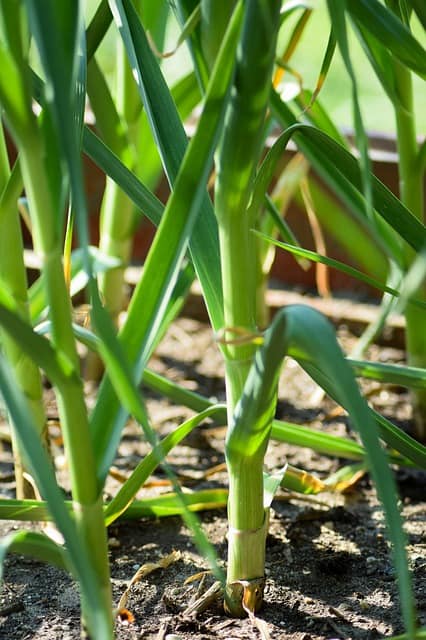
Garlic is a sun-loving plant that requires at least six hours of direct sunlight daily. When choosing where to plant garlic, consider locations that maximize sun exposure throughout the day.
Sunlight Analysis
Conduct a simple sunlight analysis of your garden. In the morning, the sun rises in the east, and this will be the warmest interaction your plants have with sunlight. Areas that receive morning sunlight are excellent for planting garlic as they help preheat the soil, leading to stronger growth in colder climates.
Avoiding Shaded Areas
Avoid areas where trees, buildings, or taller plants may cast shade on your garlic. While garlic can tolerate some partial shade, excessive shade will diminish the size and quality of the bulbs. Position your garlic where nothing is likely to obstruct a full day of sunlight.
Interacting with Nature: Companion Planting with Garlic
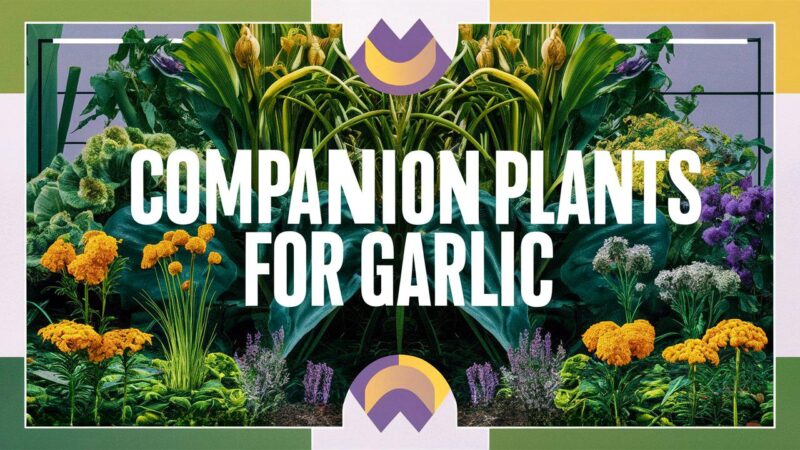
If you’re planting garlic in your vegetable garden, consider using companion planting techniques. Certain plants can enhance the growth of garlic or help ward off pests.
Beneficial Companions
Flowers: Planting marigolds or nasturtiums nearby can repel pests. These flowers also attract beneficial insects that help with pollination and pest control.
Herbs: Companion herbs like basil and cilantro enhance the aroma of your garlic while importing essential nutrients back to the soil.
Other Vegetables: Onions and carrots coexist well with garlic, as they share similar growing conditions and pest deterrent qualities.
Plants to Avoid
On the flip side, it’s critical to know what not to plant near garlic. Peas and beans, for instance, do not fare well when planted adjacent to garlic since these legumes can become stunted or diseased in its presence. Also, avoid planting garlic near other alliums (like onions), as they can compete for the same nutrients.
Timing Your Planting: When To Plant Garlic
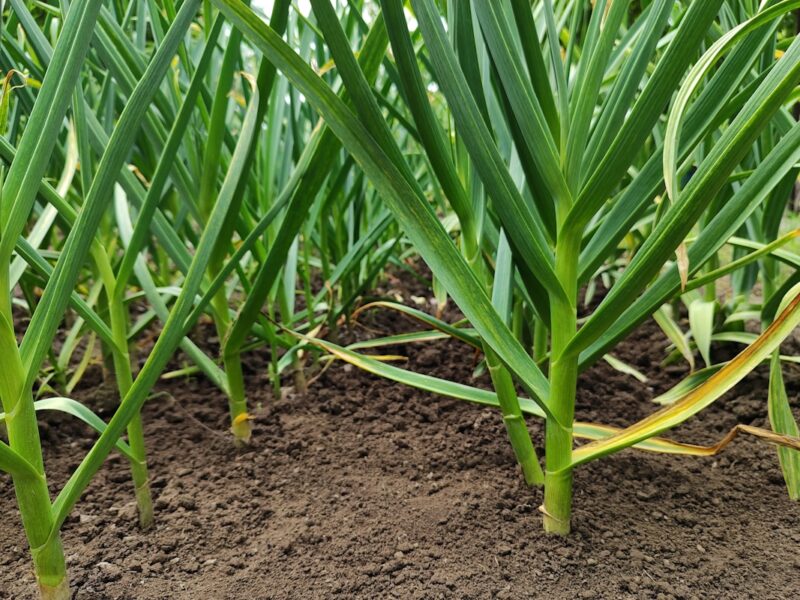
Garlic planting timing is contingent upon your local climate and chosen garlic variety. However, there is a general guideline to follow.
When to Plant
Fall Planting: In most regions, particularly colder areas, garlic is typically planted in the late fall, around 4-6 weeks before the ground freezes. This allows the bulbs to establish roots before going dormant in winter.
Spring Planting: If you live in a warmer climate where garlic can be planted in spring, do so as soon as the soil can be worked. Ensure adequate pre-planting preparation to give your garlic the best chance at healthy growth.
Timelines: Typically, garlic takes about 6 to 8 months from planting to harvest. This timeline can vary based on your specific climate and garlic type. Observing your garlic’s growth cycles will teach you the best timing for future crops.
Pest and Disease Prevention: Protecting Your Garlic
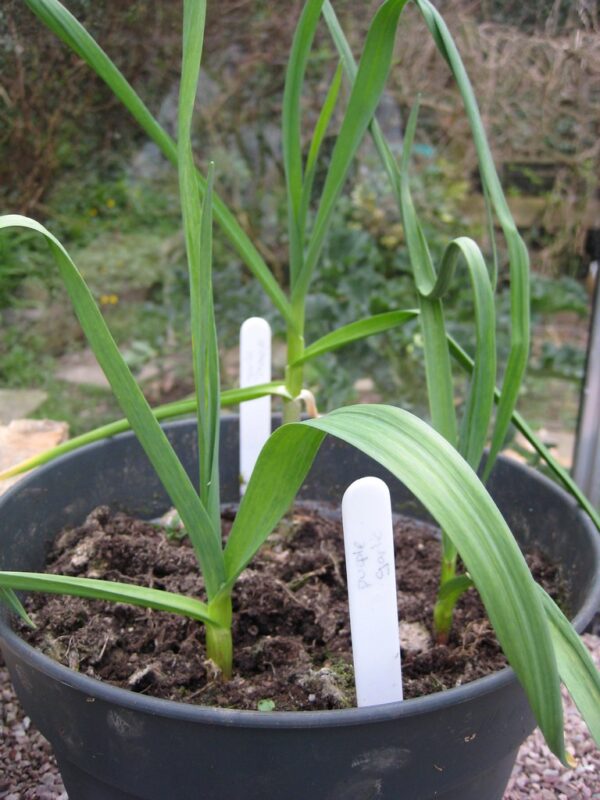
As you plan where to plant garlic, also consider potential pest and disease threats that might affect its growth. Garlic is quite resilient, but it can be vulnerable to certain pests.
Common Pests
Aphids: Small and destructive, these pests can ruin garlic plants. A solution is to plant garlic strategically near other plants that repel aphids or use insecticidal soap in the early stages.
Whiteflies: These pests target the undersides of leaves and can significantly damage garlic. Encourage predatory insects that feed on whiteflies to help manage the problem.
Diseases to Watch Out For
Root Rot: Occurs mainly in overly wet conditions. Choosing the right location with good drainage can prevent this issue.
Gray Mold: This fungal disease can affect garlic during humid growing seasons. Ensuring proper air circulation around garlic plants can minimize risk.
Rust: Garlic rust manifests as orange spores on leaves, which can stunt growth. Plant disease-resistant varieties where possible and practice good crop rotation.
Harvesting Your Garlic: Knowing When It’s Ready
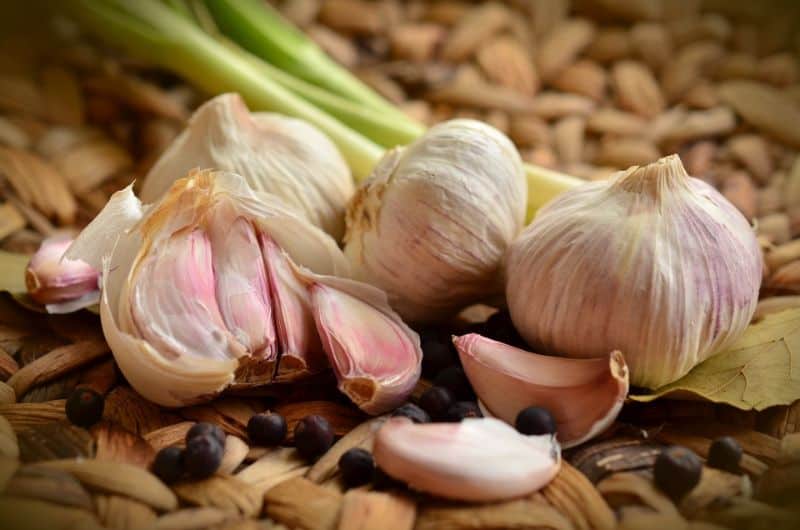
After successfully planting and tending to your garlic, the time will come to harvest. Knowing when to pull your garlic can be as crucial as where you planted it.
Signs of Readiness
Look for yellowing leaves and when about one-third of the lower leaves dry out, it’s typically time to harvest garlic. You can also gently dig around the bulbs with your hands to check their size.
Harvest Timing
The ideal time for harvesting is often late summer to early autumn, around two to four weeks after the first signs of yellowing. Careful monitoring will ensure you grab those bulbs just at the right moment. If they’re pulled too late, the bulbs may begin to split, negatively affecting their storage quality.
Conclusion: Becoming a Garlic Growing Expert
Selecting where to plant garlic is an organic marriage between understanding the crop’s needs, evaluating your specific growing climatic conditions, and maximizing your local soil’s capabilities. Whether you opt for raised beds, garden plots, or container gardening, those who take the time to plan the perfect location will find themselves rewarded with luscious garlic bulbs bursting with flavor.


